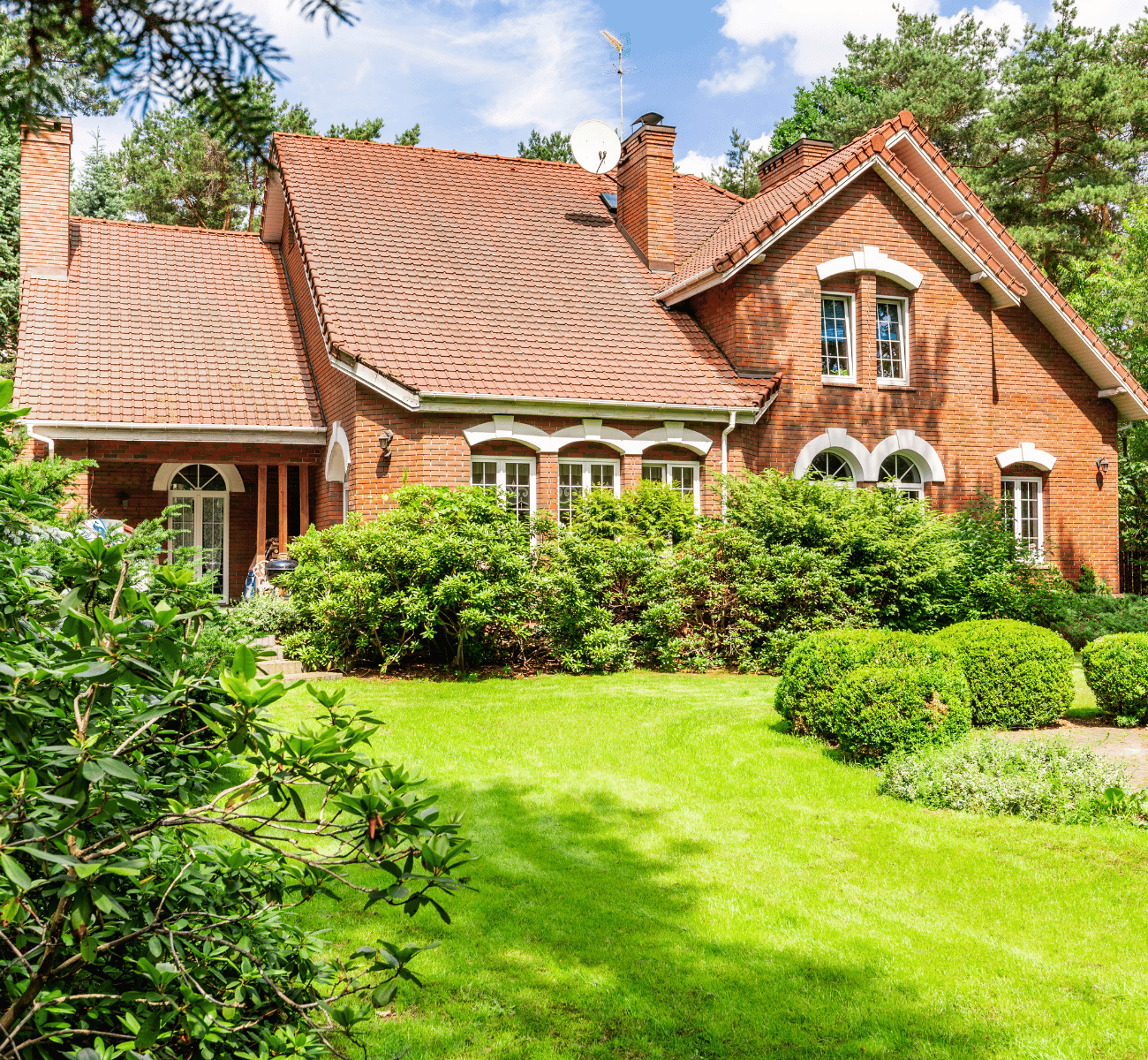7 Best Ways To Keep Your Lawn Green
Are you struggling to keep your lawn green? Follow these easy steps to keep your lawn green year-round.
It is almost every homeowner's dream to have a beautifully green lawn. Whether you prioritize curb appeal, a clean home, or nice grass for your kids to play on, you won't regret keeping your lawn green.
A beautiful lawn is something to be proud of, but it can be difficult to achieve. It can be harder or easier depending on where you live and the time of year. Nonetheless, there are many ways in which to limit spots, dead patches, and thinning sections.
About 41% of the general population report they idolize healthy and green grass. You may run into problems with improper watering, mowing, or weeds. However, it will all be worth it in the end when you can look at your new and lush lawn.
It is vital not to overwater your lawn to attain the ideal healthy lawn and keep your household water usage low. Remember that about 30% of your household water usage is typically devoted to outdoor uses, but there are many ways to keep a healthy lawn and a low water bill.
Keep reading to learn these seven best ways to keep your lawn green.
Water Thoughtfully
Watering your lawn is one of the most important parts of keeping a healthy and green lawn. Lawn care is a year-round process and your grass only needs about 1 to 1.5 inches of water per week. However, it will need more water in the summer when the high temperatures cause water to evaporate more easily.
Keep in mind that rainwater counts as part of the 1.5 inches in your lawn, so during the rainy season, you don't have to water quite as much yourself. It is important to determine your soil type, which you can do with a soil test kit or with the help of a lawn care professional. The soil type will determine how much and how often you should water your lawn.
It is best to water every few days in the morning. Waiting a few days between watering is vital to allow the root system to grow deeper and stay green longer. Many homeowners use sprinkler systems, which only need to run for approximately an hour.
Here are some common signs that your lawn needs more watering:
- If you can spot footprints after walking on your grass.
- Your grass is a duller blue and gray color.
- If you noticed leaf blades wilting.
Here are some common signs that your lawn is getting too much water:
- If water is running onto the street from your sprinkler system.
- If your soil feels mushy or discolored.
Unfortunately, your lawn can show some of the same signs if it is over-watered or underwater. A good rule of thumb is to check if your grass feels damp before turning on your sprinklers.
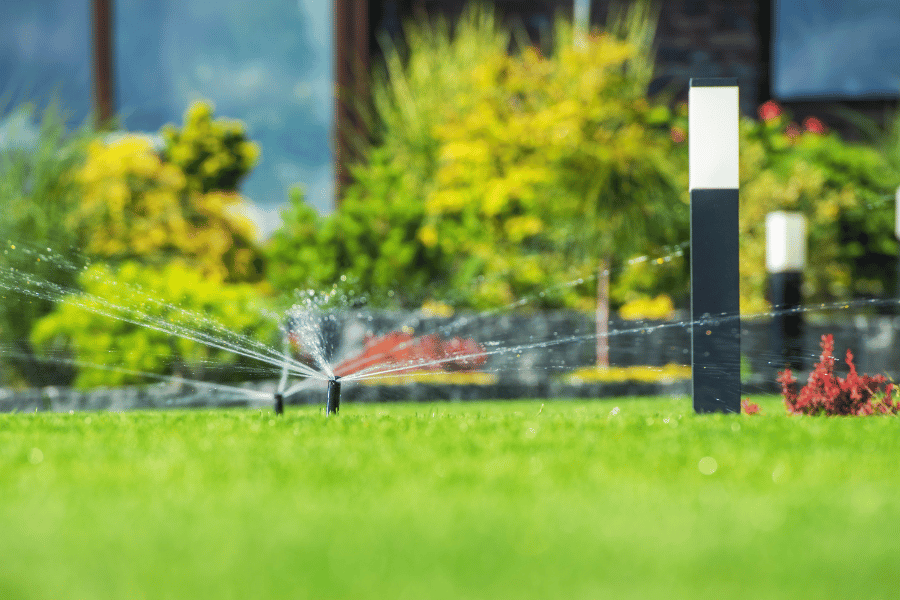
Mow Appropriately
A common misconception is that you should mow your lawn short in order to keep it green. But in actuality, you should keep your lawn high to allow the roots to grow. Ensure you never cut off more than 1/3 of the grass blade to keep the grass healthy.
The right mowing techniques will make or break your lawn. During the summertime, make sure to mow at the top end of your turf's recommended height. This extra height will keep your soil cool and limit the water that evaporates.
Most lawns get stepped on a lot and it can be hard to keep people and pets off your grass. Luckily, taller grass has more of a chance to bounce back after being stepped on. Keep up with mower maintenance by sharpening the blades, especially during the summer.
While it may not be as visually appealing, leaving the grass clippings on your lawn is actually beneficial. Once the clipping decomposes, they actually return the moisture and nutrients to the soil. Not only is this good for your lawn, but it will be less work for you to worry about.

Try to Keep Off the Grass
It can be hard to keep people and pets off your grass, but it is extremely beneficial to keep your lawn green. While playing in the yard might be a lot of fun for your kids, foot traffic can create thin and dead spots on your grass.
You don't have to stay completely off your grass, but any reduction in foot traffic can go a long way. Many use this as an opportunity to build a walkway to your door. Try your best to keep walkways and driveways clear to encourage the use.
During the holiday season, if you like to decorate the exterior of your home, consider designating a spot out of the way where the lawn damage may not be as noticeable.
Walking on grass can lead to many problems, such as soil becoming compacted, which can lead to poor drainage and flooding. This also makes it more difficult for moisture and nutrients to reach the roots; fortunately, soil aeration can help. If you just recently reseeded your lawn, you should be extra careful about foot traffic because this can create bare patches.
Fertilize
Fertilizer contains nitrogen, phosphorous, and potassium, which support grass growth. This is the best way to keep strong roots that stay green all year. Nitrogen specifically will increase the green color of your lawn. This is because nitrogen is one of the three macronutrients essential for healthy turf.
More green on the tip of your grass blades means that the grass can get more sunlight for photosynthesis.
While picking fertilizer, consider your grass type. Warm-season grasses like Bahia, Bermuda, centipede, St. Augustine, and Zoysia grow throughout the year but need more attention than cool-season types. The U.S. Environmental Protection Agency states that Americans buy over 70 million pounds of fertilizers annually.
Most residential lawns use quick-release fertilizers, which are inexpensive, work better in cold temperatures, and allow for a quicker color response. Extended-release fertilizers are great for homeowners who don't have time to fertilize as often and prioritize being environmentally friendly.
Fertilizer is also beneficial for gardeners as it helps speed up plant growth. On average, 55% of U.S. households have a garden; if this includes you, then you should definitely invest in a good fertilizer for both your lawn and garden.
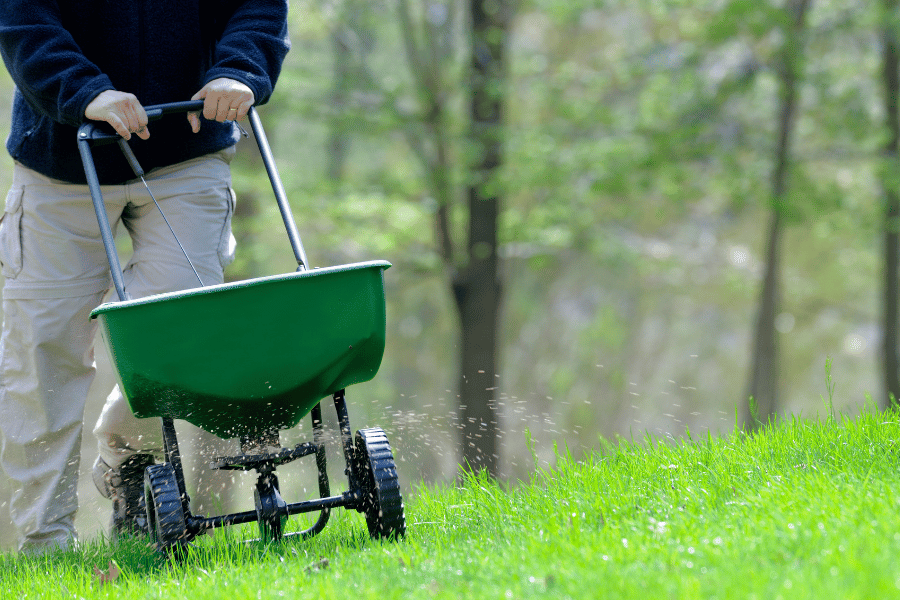
Take Care of Weeds
Almost every lawn will battle against weeds; typically, lawns that are covered in weeds mean there is an underlying problem. In order to completely get rid of the weeds, you need to identify the problem and fix it as soon as possible.
You may be able to dig up the weeds with your hands; just be sure you get the entire root so it doesn't grow back. You will also need to know what type of weed you are dealing with; here are the most common categories of weeds:
- Broadleaf: These weeds are often clovers, dandelions, chickweed, and ground ivy. They have broad and flat leaves.
- Grass-like: These include nutsedge, wild garlic, and wild onion that look very similar to grass and can be harder to spot.
- Grassy: These also look similar to grass and include foxtail, annual bluegrass, quackgrass, and crabgrass.
Once you know the type of weeds, grab the right herbicide and apply the treatment. After, you can mow or rake the weeds out of your grass and then aerate to reduce the probability of the weeds growing back.
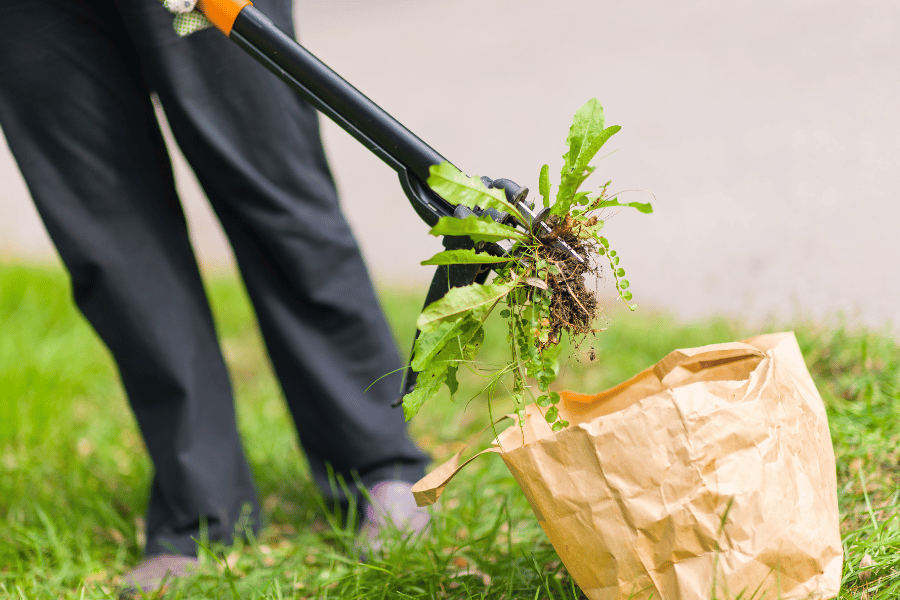
Regularly Clean Your Lawn
Similar to foot traffic, anything left on your lawn can reduce the greenness in your lawn. While we love watching our kids play in the yard, we have to make sure to pick up after them and don't leave any toys lying around.
Make sure you are picking up after your pets, hopefully training them to relieve themselves off your front lawn. You can even build a gravel or mulch area specifically for your dog so as not to damage your grass.
Composting
While you can use grass clippings to grow your lawn, you can also compost other waste from your garden or kitchen to help. Adding compost to your soil is one of the best ways to keep your lawn green.
Composting creates healthy soil by balancing soil density and providing nutrients to microorganisms within it. By balancing the soil density, plants and lawns can grow healthy roots which leads to steady growth.
You will only need to compost on your lawn about once or twice a year, but make sure the ground is not frozen. This is because the nutrients always cycle, and microorganisms will keep reproducing. Generally, you only need about 1/4 to 1/2 inches of compost on top of your soil.
Once you have collected enough compost, fill a wheelbarrow and place small piles of compost around the yard. This has to be evenly distributed without any gaps. A metal rake is ideal for scratching up the soil surface and allowing the compost to get fully into the soil. Rake until you can see the grass blades through the compost, and then water your lawn.
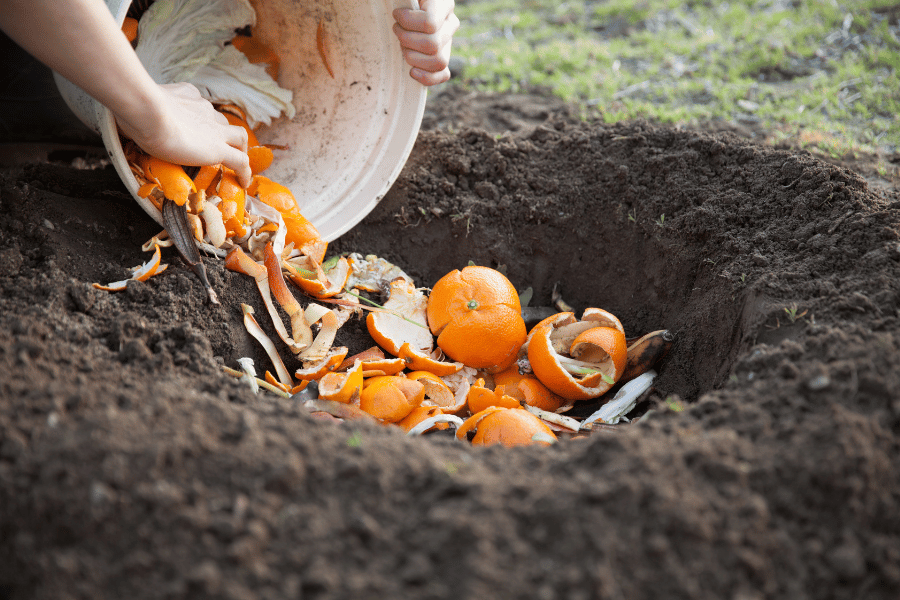
Methodology
We used information and data from different sources as well as our own data to determine the best ways to keep your lawn green. Most of the data was sourced from the following sources:
FAQ: Best Ways To Keep Your Lawn Green
Here are some commonly asked questions about the best ways to keep your lawn green.
How do I get my grass to be more green?
There are many ways to get your grass greener. The top ways are to fertilize your lawn, kill weeds, routinely water your lawn, and test your soil.
How do I keep my lawn green in the hot summer?
The most important thing to do during the summer is keep up with watering, feeding, and reseeding your lawn. Consider mowing the grass high because longer grass allows for the growth of longer roots.
Should you water the grass every day when it's hot?
A common misconception is that you should water your grass as much as you can, but that is incorrect. Your lawn only needs about one inch of water per week and this includes rainfall. As long as you follow this rule of thumb, your lawn should continue to grow.
How many inches is 20 minutes of watering?
If you water your lawn for 20 minutes, three times a week then this should equal about one inch of water. This is the best way to keep your lawn healthy and green.
What is the 1 2 3 2 1 lawn watering technique?
This technique means in April, water one day a week; in May, water two times a week; in the summer, water three times a week; in September, water two times a week; and in the fall, water one time a week again.
Best Ways To Keep Your Lawn Green - The Bottom Line
A green lawn is almost every homeowner's dream come true. It can be hard to do, but it is a great way to increase your home value and even attract more buyers if you are hosting an open house.
No matter why you want a green lawn, you will find that it is not as difficult as it may seem. However, a healthy and green lawn does take time, effort, and attention. So, keep this in mind as you try these seven best ways to keep your lawn green.
As you are searching for your next home, Raleigh, NC, is one of the fastest-growing areas in the country and has many beautiful homes for sale; you'll have to act fast if you want to buy your dream home in one of Raleigh's best neighborhoods.
Before you buy your next home in the Triangle, feel free to contact one of our helpful real estate specialists, as they are eager to help you find the perfect home. We know that buying a home can be overwhelming, so make sure you are prepared beforehand.
